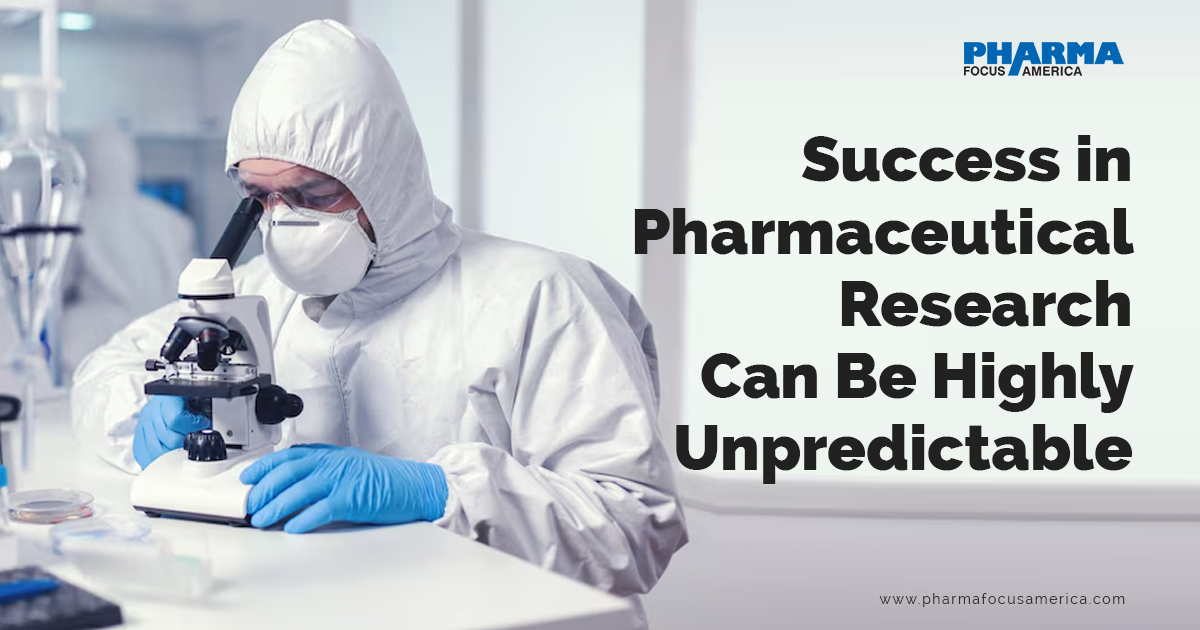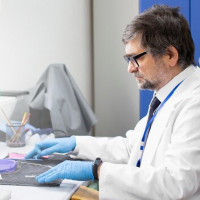Success in Pharmaceutical Research Can Be Highly Unpredictable

Strong 8k brings an ultra-HD IPTV experience to your living room and your pocket.
Author: J. Mark Treherne, Director and the Chairman, Talisman Therapeutics Ltd
Success in pharmaceutical research can be highly unpredictable. However, more predictive preclinical screens can now be implemented to score therapeutic candidates in a way that better correlates with their potential clinical utility. This article explains the influence of predictive validity in analysing such preclinical screens to increase productivity in drug discovery.
The drug discovery productivity problem
The macroeconomic fundamentals of the pharmaceutical industry remain strong. High demand for innovative pharmaceutical products is driven by a growing and ageing global human population with significant unmet medical needs. However, discovering new drugs is a costly, lengthy and, still, largely unpredictable endeavour. The pharmaceutical industry has consistently experienced high rates of compound attrition throughout the drug discovery process over many decades now. Consequently, the biotechnology and pharmaceutical industries are continuing to develop new strategies to improve their overall productivity and reduce the high attrition rates in their development pipelines. Nonetheless, the successful products that do make it on to the market are still having to compensate for too many compounds that are discontinued, as often a lack of compelling efficacy data is uncovered too late during subsequent development. Overall, the number of new drugs approved per billion US dollars spent on research and development has roughly halved about every nine years from 1950 to 2010, with no obvious signs of any substantial improvements over the subsequent decade. So, how can success in pharmaceutical research now become less unpredictable in the future?
Improving the predictivity of pre-clinical screens
Previous analyses have uncovered how assay validity and reproducibility can be correlated across a wide range of simulated screening assays and disease models, such as described in the publication by Scannell and Bosley in 2016 (PLoS ONE 11, 1-21). These authors proposed that increasing the implementation of more relevant and predictive screens should be incorporated preclinically into the drug discovery process. A more rigorous understanding of efficacy and toxicity at multiple biological levels would then offer a potential solution to this systemic productivity problem.
Initiating a new drug discovery program typically requires a chemical starting point for small-molecule drugs to initiate the optimisation of that compound’s biological properties, which can also be guided by constantly improving computational chemistry methods. The optimised development candidate needs to possess an adequate balance of efficacy, pharmacokinetics and safety pharmacology to then progress into the clinic. Although the discovery process differs somewhat for antibodies and other biological drugs, they are still required to meet adequate biological criteria to be progressed into clinical development. Biological selection criteria need to be driven by assays with a higher probability of predicting clinical efficacy in comparison with the current, more established workflows. It has been argued that such pivotal decision-making assays need to be introduced much earlier into the discovery process to enable disruptive changes in drug discovery to make a real difference to productivity. For more details on the rationale underlying this conclusion, see the publication by Treherne and Langley in 2021 (Drug Discovery Today 26, 2489-2495).
How to increase future productivity across drug discovery
There have been huge advances in our understanding of the underpinning science of human disease, as well as the introduction of new technologies that should, at least in theoretical principle, have improved the overall productivity of drug discovery. However, success rates still remain stubbornly low. Analytical methods based on decision theory have demonstrated that small changes in the “predictive validity” of an assay have a remarkably significant impact on downstream success rates. In this context, predictive validity refers to the ability of a test or other measurement to predict future outcomes in a human clinical trial. The mathematical basis underlying this approach was described by Scannell et al. in 2022 (Nature Reviews Drug Discovery 21, 915-931), who exemplify the relevance of predictive validity in drug discovery to demonstrate why it matters and then set out how it could be improved. There are many long-standing and unmet medical needs that would benefit from more advanced in vitro assay systems. Historically, drug discovery has been overly dependent on animal models that can be poorly predictive of human pathology, even when human disease-associated genes are engineered into transgenic mice.
Learn more: https://www.pharmafocusamerica.com/research-development/success-pharmaceutical-research
Note: IndiBlogHub features both user-submitted and editorial content. We do not verify third-party contributions. Read our Disclaimer and Privacy Policyfor details.


